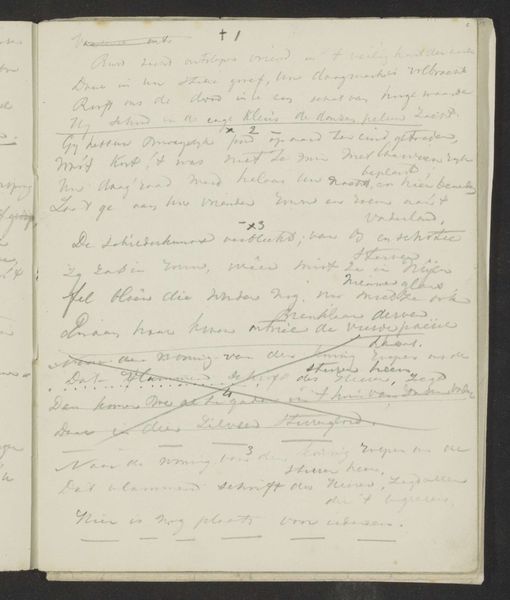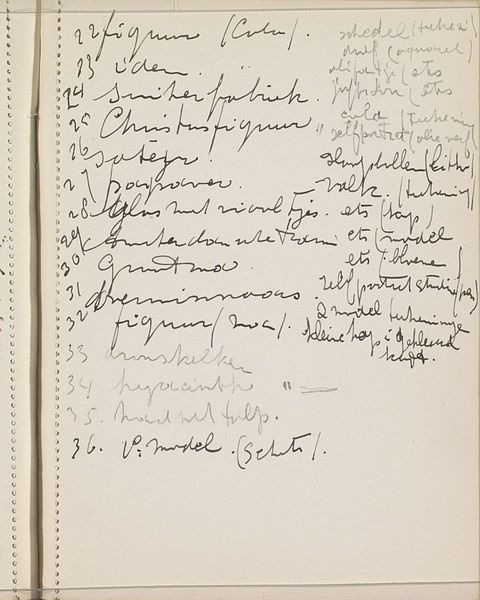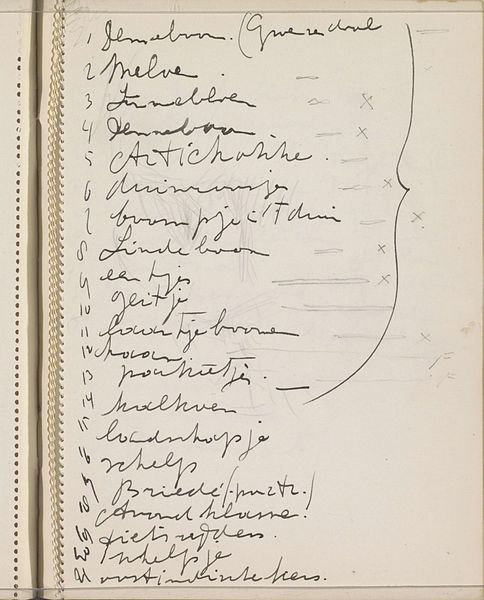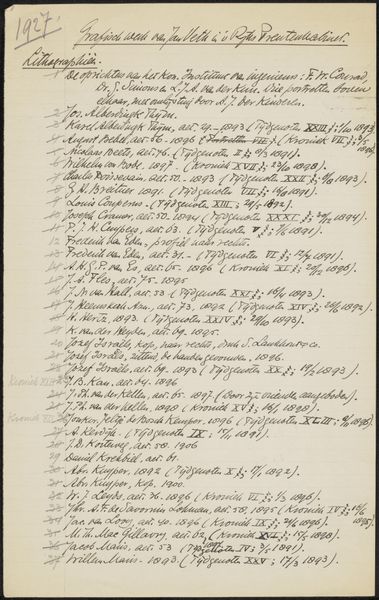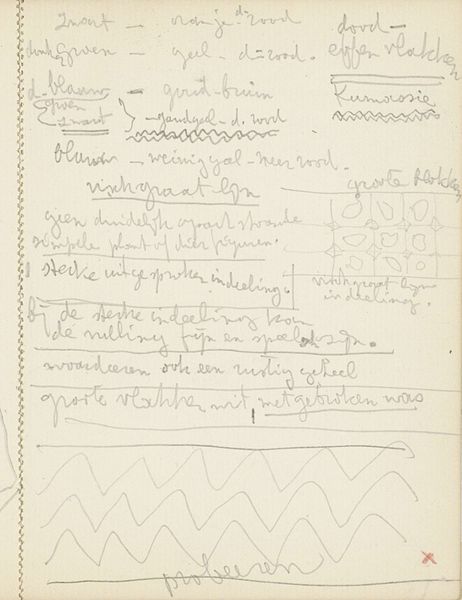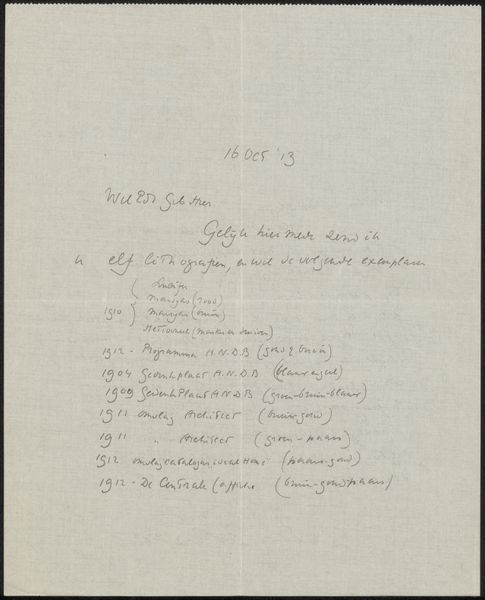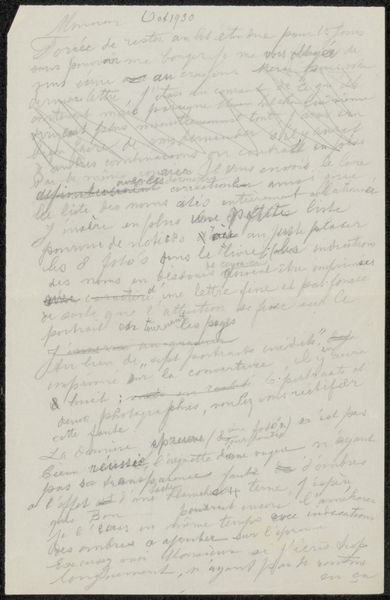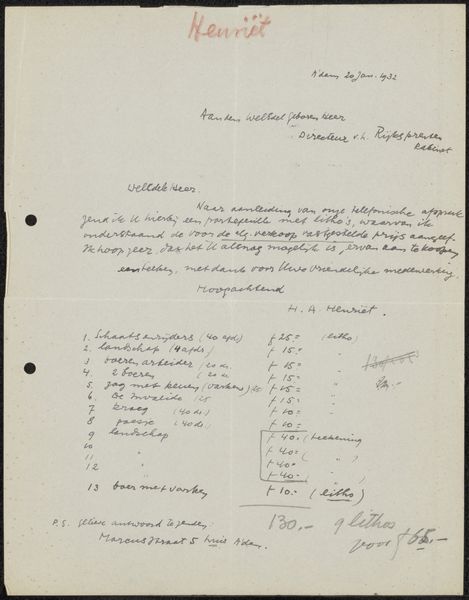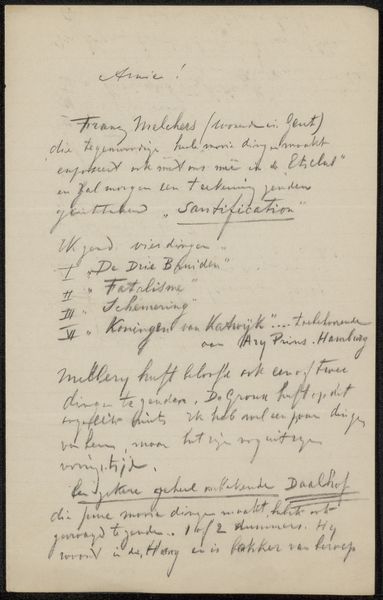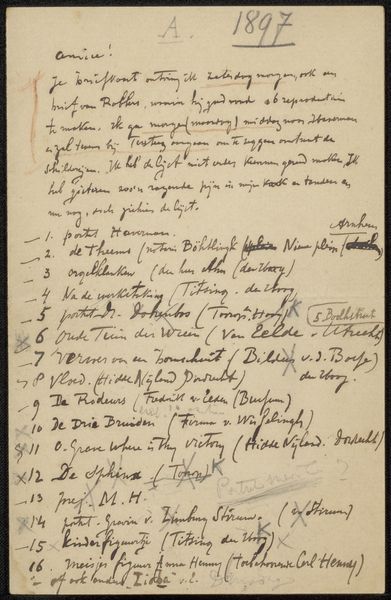
drawing, weaving, textile, ink, pencil
#
drawing
#
weaving
#
textile
#
personal sketchbook
#
ink
#
ink drawing experimentation
#
pen-ink sketch
#
pencil
#
pen work
Dimensions: height 283 mm, width 212 mm
Copyright: Rijks Museum: Open Domain
Editor: Here we have Dirk Verstraten’s “Instructie voor de kleuren en afmetingen van een tapijt,” which translates to "Instructions for the colours and dimensions of a carpet,” created sometime after 1907. It’s an ink and pencil drawing, and it feels very utilitarian, almost like a blueprint, yet quite personal. What strikes you when you look at it? Curator: Well, immediately I’m drawn to think about the intersection of art and industry at this time. We see a fascinating blurring of the lines here. The instructions suggest a systematized approach to textile production, very much in line with the burgeoning industrial design movement of the early 20th century. However, it's rendered by hand, making it unique and somewhat resistant to the idea of mass production. Do you think the fact that this instruction manual exists as a drawing changes our perception of the carpet itself, if the carpet were ever created? Editor: Absolutely. Knowing it stems from this individual, hand-drawn plan makes me see the potential carpet as more than just a manufactured item. It introduces the idea of artistic intention and design into something functional. It makes it seem closer to the Arts and Crafts movement perhaps? Curator: Precisely! Think about the social and political context. Was this intended for a workshop setting, potentially employing local artisans? Or perhaps intended as a sample for wealthy patrons? The drawing isn’t just about technical specifications; it is also a cultural artifact, offering us insight into artistic labour and the evolving relationship between art, craft and design at that moment. Editor: I never thought of a drawing like this holding so much cultural information. It goes beyond just surface aesthetics! Curator: Indeed. It's a potent reminder that seemingly practical objects can carry a wealth of historical and social significance, waiting to be unravelled. Editor: This has definitely shifted my perspective on how even instructional art can reveal a lot about socio-economic contexts. Thank you!
Comments
No comments
Be the first to comment and join the conversation on the ultimate creative platform.

